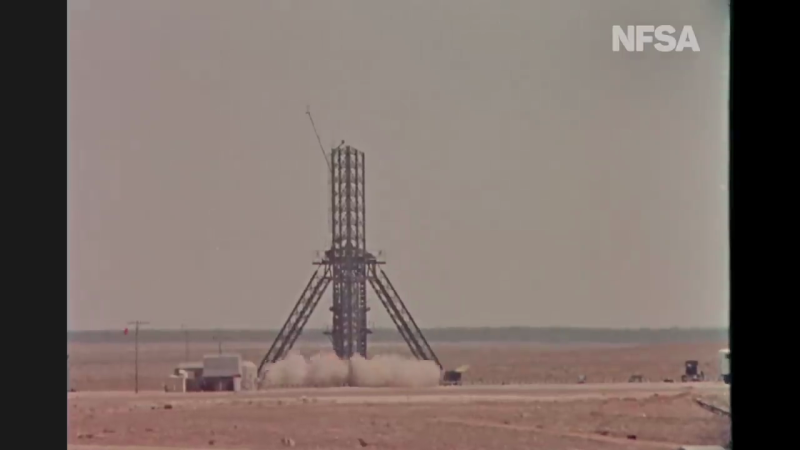The Film and Sound Archive (NFSA) of Australia just released a digitized version of a 1957 film documentary on Australia’s rocket research back in the day ( see video below the break ). The Woomera test range is an isolated place about 500 km northwest of Adelaide ( 2021 population 132 ) and hosts a small village, an airstrip, and launch facilities. In the Salisbury suburb of Adelaide, a former WW2 munitions factory complex was repurposed as a research center for rockets and long range weapons.
The documentary showcases a wide variety of state-of-the-art technologies from the late 1950s. As ancient as those appear today, a lot of the basic concepts haven’t changed — careful choreography of the launch countdown sequence of events, the antenna and radio systems to receive and store rocket telemetry, photographic records of the rocket in flight, and post-flight analyses of everything to fix problems and improve your designs. They tried to do as much as possible at the Salisbury campus, because as the narrator notes, it’s expensive to work at the distant test range, a concept which is still a consideration today. There’s even a glimpse of the residents’ leisure life in the barren village. It was a different time, to say the least.
We also note the GAF Jindivik remote controlled target drone aircraft in one segment, a project that was decades ahead of its time. It’s also interesting that the Jindivik wasn’t flown by direct commands like a traditional RC model airplane we’re familiar with today. Rather, it carried an on-board autopilot which received commands from the pilot on the ground — a subtle distinction but foreshadows the autonomy of modern remotely piloted drones.
If you like technology history, then you should definitely watch this video. You might not remember, but Australia was the third country to launch a satellite into space ( after the USSR and the USA ). WRESAT lifted off from the Woomera test site at 2:19 PM on 29 Nov 1967 atop a modified Redstone rocket. And Woomera is once again being used to launch payloads into space, as we covered in this 2020 article.
















I can smell the burning Koalas!
Oh no, poor Blinky B.! 😢
Some reading to go with the video
https://www.dst.defence.gov.au/publication/fire-across-the-desert
Looks like it is coal powered like the rest of the country
South Australia has no coal power plants; in fact we have the world highest penetration of rooftop solar installations.
My wife and I blew past many times on road trips between Alice Springs and Adelaide, before finally scheduling time in 2014 to visit the base museum and catch lunch at the bowling alley. The housing facilities were still being kept in good nick.
“You might not remember, but Australia was the third country to launch a satellite into space ( after the USSR and the USA )”
… from its own territory, on a US rocket.
Third country launching a satellite (Ariel-1) is England (but an US-UK sat design, on US rocket from US territory).
Third country launching an indigenous design satellite (Alouette-1) is Canada (but on US rocket from US territory).
Third country launching an indigenous design satellite (Asterix-1) with its own rocket is France (but from Algeria desert on former national facility).
Third country launching an indigenous design satellite (Ohsumi) with its own rocket from its own territory is Japan.
https://en.wikipedia.org/wiki/Timeline_of_artificial_satellites_and_space_probes
^ this, I thought Woomera was used by the British government for the British space program, Black Arrow / Prospero and the like:
https://en.wikipedia.org/wiki/British_space_programme
Is a launch pad explosion called a Boomera?
For you folks who live in Australia, I noticed a lot of people wearing short pants in this video, in settings where that would raise a few eyebrows where I’m from. Is that because of the scorching heat out there in Woomera? Or is that just a thing, even in ordinary Australian cities?
Wearing shorts? Absolutely. Where I am (Brisbane) winter is finishing at the end of this month at which I’ll swap over from cold weather gear (t-shirt and jeans, pullover if very cold) to t-shirt and shorts until next winter beginning 1st June.